Belgian Beverages: Basic Overview
Common Ingredients
Common Preparing Methods
Drinking Etiquette
Influence and Fusion
Belgian Beverages: Origin and Region
Cuisine
Culinary Region
Country’s Region
Classifications of Belgian Beverages
-
Alcoholic Beverages
In Belgium, alcoholic beverages include a vast array of internationally acclaimed beers such as Trappist, lambic, and Belgian ales, alongside spirits like jenever and liqueurs like Elixir d’Anvers.
These drinks are often made using brewing and distilling traditions.
-
Non-alcoholic Beverages
Non-alcoholic options in Belgium range from traditional Belgian hot chocolates, renowned for their rich flavor, to various fruit juices known locally as vruchtensappen.
These beverages offer delicious options that can be enjoyed in cafes and homes across the country.
Belgian beverages are renowned for their variety and quality, encompassing a rich array of both alcoholic and non-alcoholic options.
Central to Belgian drink culture is its world-famous beer, including Trappist, lambic, and a wide variety of ales, each with distinct brewing methods and regional characteristics.
Aside from beer, Belgium is also known for its fine chocolates and coffee, often enjoyed in cafes and social gatherings. Additionally, the country produces a selection of unique spirits and liqueurs rooted in local traditions and ingredients.
Then, uncover the dishes that go well with the flavorful drinks coming from Belgium.
28 Most Popular Belgian Beverages
Uncover 28 drinks commonly available in Belgium to discover your favorite choice. Explore the drink options using the filters to view them in popularity, ingredients, preparation methods, and many more features.
Trappist Beer
- Alcoholic
- Traditional
Trappist beer is a beer brewed by Trappist monks in Belgium and made by top-fermenting within the walls of a Trappist monastery. The alcohol is a favorite drink for many Germans, distinctive for its strength and flavor complexity, typically categorized into several types such as Enkel, Dubbel, Tripel, and Quadrupel.
These beers are also mostly bottle-conditioned, which means they undergo a second fermentation process in the bottle. For the best tasting experience, Trappist beers should be served in glassware like chalices or goblets that help concentrate their aromatic complexity.
Duvel
- Alcoholic
- Traditional
Duvel is a strong Belgian golden ale that is one of Belgium’s most iconic beers. Interestingly, the ale features high fermentation and secondary fermentation in the bottle to form a bright golden color and a creamy, frothy head.
The beer offers a complex, with a subtle bitterness and a dry finish, featuring notes of fruitiness and spice. Traditionally served in a tulip-shaped glass to enhance its aromatics, Duvel comes with deep flavors and a high alcohol content of around 8.5%.
Chimay Red
- Alcoholic
- Traditional
Chimay Red, or Chimay Première, is the oldest beer from the Trappist brewery at Scourmont Abbey in Chimay, Belgium. Known for its coppery color and sweet, fruity taste, this top-fermented dubbel offers a complex flavor profile of caramel and a light, creamy head.
Often served in a chalice, Chimay Red is best enjoyed at a normal room temperature that allows its full range of flavors to unfold.
Jenever
- Alcoholic
- Traditional
Jenever is a traditional Belgian spirit that is also popular in the Netherlands drinking culture, parts of Germany, and France. Distilled from malt wine and flavored with juniper, Jenever comes in the oude (old) and jonge (young) varieties that differ in distillation methods and taste.
Oude Jenever is smoother and often sipped neatly, while jonge Jenever is lighter and is served cold or used in cocktails. This fragrant spirit is often enjoyed in social settings and as a digestif in Belgium.
Witbier
- Alcoholic
- Traditional
Witbier, also known as white beer, bière blanche, or simply Witte, is a traditional Belgian beer with a hazy or white appearance when cold due to suspended yeast and wheat proteins. This top-fermented beer is primarily brewed in Belgium and the Netherlands.
Ideally, the beer includes a blend of spices such as coriander and orange peel, contributing to its refreshing flavor profile. The white beer is known for its light and often slightly sour taste when compared with common beers.
Lambic
- Alcoholic
- Traditional
Lambic is a Belgian beer characterized by spontaneous fermentation using wild yeasts and bacteria native to Belgium’s Zenne Valley.
Unlike most beers fermented through carefully controlled yeast additions, lambic ferments via exposure to the air, forming sour, funky, and earthy notes. Interestingly, lambic is a favorite drink option for the French population near the border of France and Belgium.
Traditionally brewed in the Pajottenland region and parts of Brussels, Lambic is used as a base for several renowned Belgian beer styles, including gueuze and fruit lambics like kriek and framboise.
Gueuze
- Alcoholic
- Traditional
Gueuze is a unique style of Belgian beer produced by blending young and old lambic before bottling for a second fermentation.
The process allows the remaining sugars in the younger lambic to ferment further, creating a dry, complex, and often sour beer with a cidery, wine-like taste. Gueuze is favored in Belgium for its high carbonation with notes of barnyard, earthiness, and green apple.
Traditionally served in a flute glass, it is a cherished part of Belgium often referred to as “Brussels Champagne” due to its refined qualities.
Tripel
- Alcoholic
- Traditional
Tripel is a Belgian style of beer known for its golden color and strong, complex flavor profile. The beer possesses a high alcohol content, ranging from 7% to 10%, and is brewed using pale malts and Belgian yeast for fruity and spicy notes.
Tripels often balance the sweetness from the malt with a slight hop bitterness. This beer style was refined by Trappist monasteries and is renowned for its depth and rich flavor.
Interestingly, the term “Tripel” originally may have referred to the strength of the beer, correlating to a system of marking casks with crosses, where more crosses indicated a stronger beer.
Dubbel
- Alcoholic
- Traditional
Dubbel is a beer from Belgium with a deep reddish-brown color and complex flavors derived from various malts. Originating from the Trappist monastery of Westmalle in 1856, Dubbel is rich and malty, with notes of caramel, chocolate, and a slight fruitiness of dark fruits.
This beer is characterized by its medium to full body, moderate carbonation, and a balance between malty sweetness and hop bitterness, making it a staple for Belgian consumers.
Stout
- Alcoholic
- National
Stout is a dark, top-fermented beer from Belgium with a toasty flavor that typically includes notes of chocolate, coffee, and caramel. Originating as a stronger version of porter, stout is a renowned drink for many Europeans brewed with roasted malt or barley for its dark color and robust taste.
Also, stout can vary in sweetness and strength, encompassing sub-types like dry stout, milk stout, and imperial stout, each offering unique variations.
Saison
- Alcoholic
- Traditional
Saison is a traditional Belgian ale originating from the French-speaking Wallonia region. Characterized by a highly carbonated, dry, and often spicy profile, the beer varies widely in color and strength.
Saison used to be brewed seasonally in farmhouses to refresh field workers, but it’s a more common drink nowadays throughout the year.
Belgian Blond Ale
- Alcoholic
- Traditional
Belgian Blond Ale is a popular Belgian beer with a pale to deep gold color and a moderate strength, typically between 6% to 7.5% ABV. The ale offers a subtle fruity-spicy Belgian yeast complexity, a slightly malty-sweet flavor, and a dry finish.
Belgian Blond Ale is known for its easy drinkability and clean profile, which sets it apart from the stronger and sometimes more bitter Belgian ales. This style often features a good balance of light sweetness from malts and a refreshing bitterness instead.
Flanders Red Ale
- Alcoholic
- Traditional
Flanders Red Ale is a beer from Belgium that combines the deep red color and complex sour flavor similar to red wine into one drink. Coming from the West Flanders region, this ale needs a long aging process in oak barrels for a unique combination of sharp, fruity, sour, and tart flavors.
The style typically involves a blend of young and aged beers to achieve a balanced taste, showcasing notes of plum, cherry, and other dark fruits.
Oud Bruin
- Alcoholic
- Traditional
Oud Bruin is a traditional Belgian beer from the Flemish region, characterized by its aged, sour profile and deep, reddish-brown color.
Known as ‘Old Brown’ in Flemish, Oud Bruin needs a long aging process, often in oak barrels for a complex mix of malty sweetness and acidic, vinegary notes. The beer uses mixed fermentation, incorporating yeast and lactic acid bacteria for sourness and robust flavor.
Pecheresse
- Alcoholic
- Traditional
Pecheresse is a fruit lambic beer from Belgium, brewed by Lindemans Brewery since 1987. The alcohol features a blend of one-year-old lambics and natural peach juice to get a delicate balance between sweet and sour flavors.
This golden blond, slightly cloudy beer offers a full-bodied flavor and is particularly noted for its fruity, refreshing profile. The name Pecheresse, meaning ‘sinful peach’ in French, cleverly combines the words for ‘peach’ and ‘sinner’ in the beer.
Framboise
- Alcoholic
- Traditional
Framboise is a Belgian lambic beer fermented using raspberries. Renowned for its distinctively sweet, fruity, and tart profile, Framboise offers a rich raspberry flavor, complemented by the subtle complexities of the fermentation process.
The beer often features a bright red color and a pleasant aroma of fresh raspberries, making it a visually appealing choice.
Advocaat
- Alcoholic
- Traditional
Advocaat is a traditional Belgian and Dutch liqueur consisting of eggs, sugar, and brandy. The rich and creamy beverage, often described as having a custard-like consistency, typically contains 14% to 20% alcohol by volume.
Advocaat’s smooth texture and sweet flavor make it a popular component in various desserts and cocktails. The liqueur is particularly enjoyed during the holiday season and can be served on its own or as part of mixed drinks.
Elixir d’Anvers
- Alcoholic
- Traditional
Elixir d’Anvers is a Belgian herbal liqueur produced in Antwerp since 1863 by the FX de Beukelaer distillery. The golden-yellow liqueur is crafted using a blend of 32 herbs and spices based on a recipe that has remained unchanged for over a century.
It’s known for its complex, bittersweet flavor and is typically enjoyed as a digestif. Elixir d’Anvers is a celebrated part of Belgian heritage used in many cocktail mixes.
Belgian Coffee
- Non-Alcoholic
- National
Belgian coffee is typically a strong, robust coffee often enjoyed with Belgian chocolate. In Belgium, it’s common to serve coffee with a small piece of chocolate or a biscuit.
Better yet, coffee in Belgium is a common pick for pairing with waffles as a light and sweet breakfast option.
Maitrank
- Alcoholic
- Traditional
Maitrank is a seasonal beverage from the Arlon region in Belgium, known for its aromatic and refreshing qualities. The beverage is made by macerating sweet woodruff (Galium odoratum), a fragrant herb, in Moselle white wine, typically during May.
The blend is then sweetened with sugar and often enhanced with sliced oranges and occasionally cognac to slow the secondary fermentation. In the past, Maitrank was initially a medicinal spring tonic but has evolved into a popular regional aperitif.
Speculoos Liqueur
- Alcoholic
- National
Speculoos liqueur is a sweet, spicy Belgian liqueur inspired by the traditional speculoos cookie. The liqueur boasts rich flavors of cinnamon, nutmeg, cloves, and cardamom.
Furthermore, this creamy liqueur is often enjoyed as a dessert drink, in coffee, or over ice. It blends aromatic spices with a smooth alcoholic base, making it a popular choice for flavoring various cocktails or sipping as a standalone treat.
Kwak
- Alcoholic
- Traditional
Kwak is a Belgian amber beer with a unique presentation in a specially designed glass. Traditionally served in a coachman’s glass, which allows it to be hung on the side of a carriage, Kwak boasts a deep amber color and a slightly sweet, malty flavor with hints of caramel and spices.
The beer is named after its creator, Pauwel Kwak, an 18th-century innkeeper and brewer, who designed the glass to offer his coachman clientele a refreshing drink without leaving their carriages.
Grisette
- Alcoholic
- Traditional
Grisette is a Belgian farmhouse ale originally brewed to quench the thirst of miners in the Hainaut province. Characterized by its low alcohol content and pale color, Grisette is brewed with barley and wheat for a light, crisp body with citrusy and slightly tart flavors.
The ale is known for its refreshing and approachable nature, making it ideal for consumption after laborious work.
Eau de Villée
- Alcoholic
- National
Eau de Villée is a Belgian liqueur known for its refreshing citrus taste, made by Distillerie de Biercée. This clear spirit comes in 40% alcohol by volume, mainly crafted from lemons and a blend of other fruits.
The liquor is traditionally served very cold for a bright, zesty flavor profile, making it a popular choice as an aperitif or a digestif. Interestingly, the liqueur’s name derives from the Villée stream near the distillery.
Spa Water
- Non-Alcoholic
- Traditional
Spa Water is a renowned brand of mineral water from Spa, Belgium, that is well-known for its purity and light mineral content. Originating from natural springs in the Ardennes region,
Spa Water has been bottled since the late 16th century and is highly valued both in Belgium and internationally.
The town of Spa, where this water is sourced, has a long history as a health resort, contributing to the water’s reputation for quality and its association with wellness and healing.
Limonade
- Non-Alcoholic
- National
Limonade in Belgium is a variety of lemon-flavored soft drinks. While similar to what is known as “lemonade” in many parts of the world, Belgian limonade can also include a broader range of fruity, carbonated beverages.
The soft drink is enjoyed for its refreshing qualities and is commonly available in cafes and stores across Belgium, often served cold to provide a refreshing break during the day.
Vruchtensappen
- Non-Alcoholic
- National
Vruchtensappen is the Dutch term for “fruit juices,” commonly consumed in Belgium. These juices are made from a variety of fresh fruits, ranging from apples and oranges to more exotic types like mango and passion fruit.
In Belgium, Vruchtensappen is enjoyed for its natural sweetness, often served freshly squeezed at breakfast or as a refreshing drink throughout the day.
Black Russian
- Alcoholic
- Exotic
Black Russian is a cocktail from Belgium, created by bartender Gustave Tops at the Hotel Metropole in Brussels in 1949. The black cocktail only requires a simple mix of vodka and coffee liqueur, typically served over ice in an old-fashioned glass.
Usually, Black Russian has a strong, dark, and sweet profile, making it a popular choice for an after-dinner drink. The Black Russian does not include cream, unlike the White Russian, which adds cream to the mixture.
What Dishes to Pair with Belgian Beverages?
Thanks to a wide range of beverages, Belgians have numerous choices to consume, especially pairing them with tasty foods:
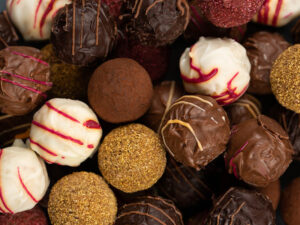
Belgian chocolate
Belgian chocolate is Ideal with a fruity Framboise or a dark Stout, both of which highlight the richness of chocolate.
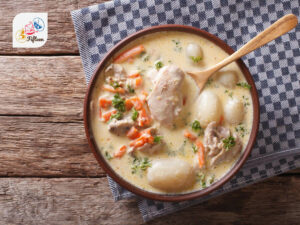
Waterzooi
Waterzooi is best accompanied by a Belgian Blond Ale, which can soothe the spice while maintaining its flavor integrity.
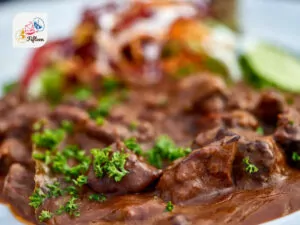
Carbonnades flamandes
Carbonnades fflamandes are perfect with the strong flavors of Trappist or Dubbel beers, which complement the hearty, deep flavors of the stew.
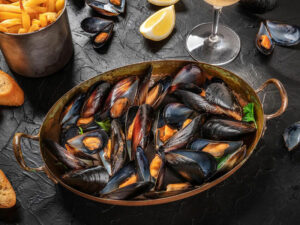
Moules frites
Enjoy moules frites with a crisp Saison or Witbier to enhance the delicate flavors of the tasty seafood at the table with crunchy fries
Ideally, you can go for classic Belgian delicacies to have the fullest meal experience in Belgium. There’s always a Belgian drink that can satisfy your thirst.
Don’t forget to leave a comment to share your favorite drink from Belgium with everyone. You can even spread these refreshments to others so they can figure out which staple drinks not to miss when in Belgium.


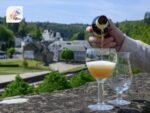
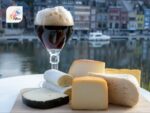
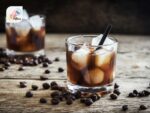
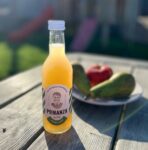

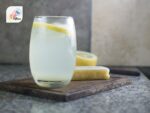
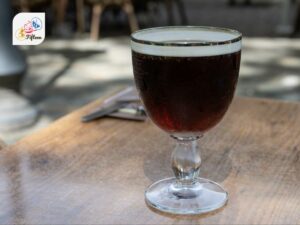
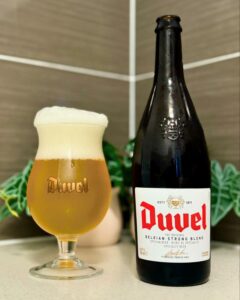
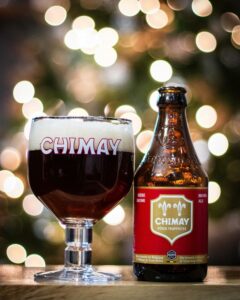
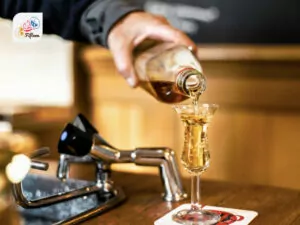
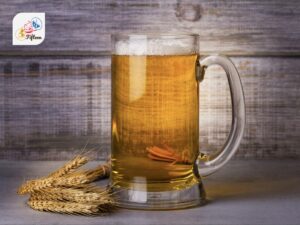
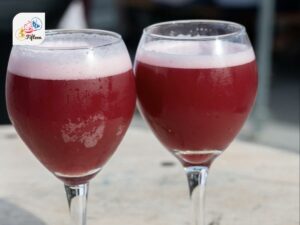
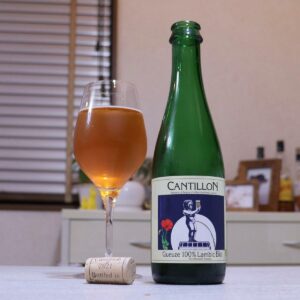
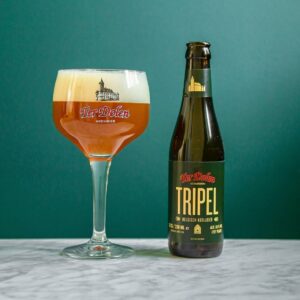

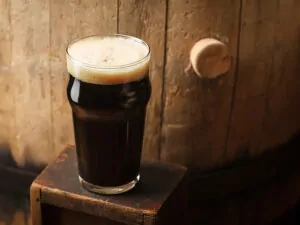
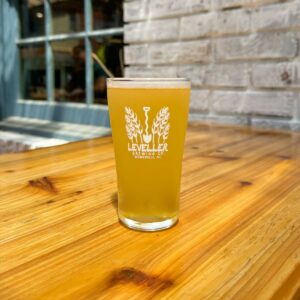
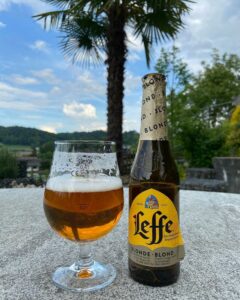
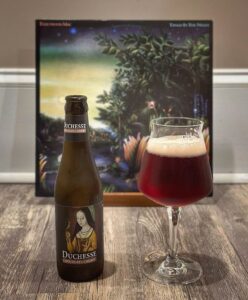
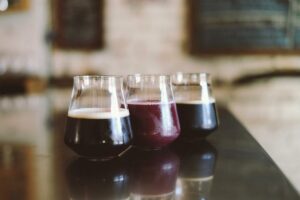
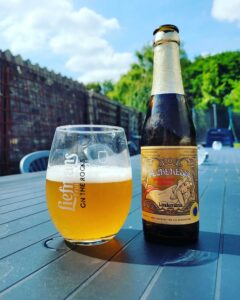
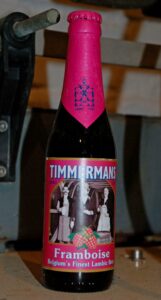
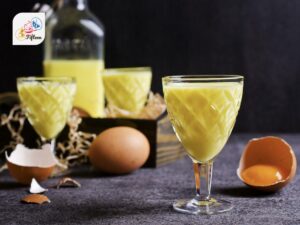
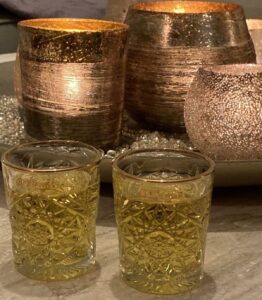
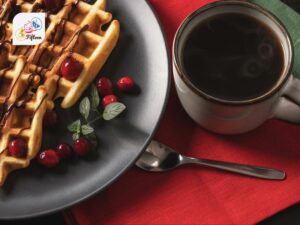
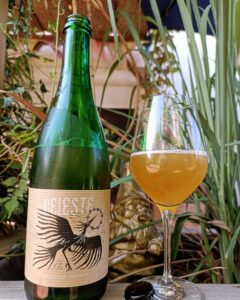
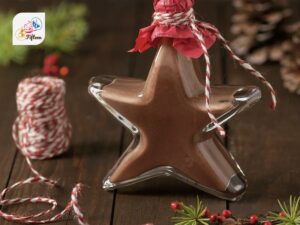
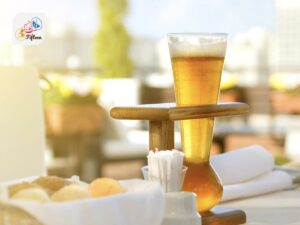
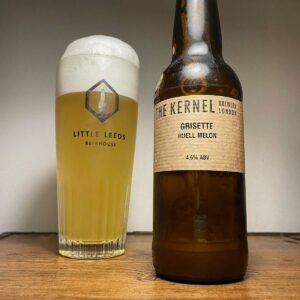
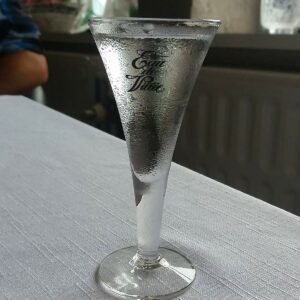
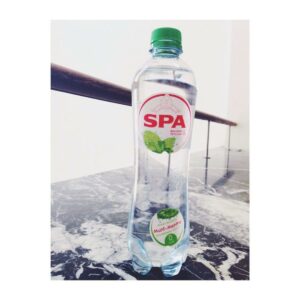
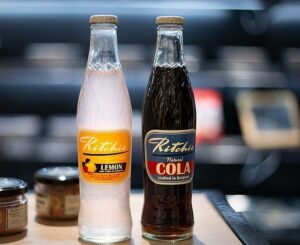
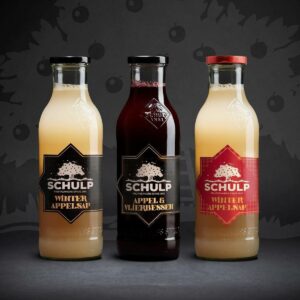
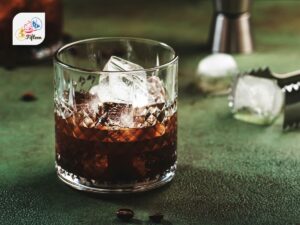
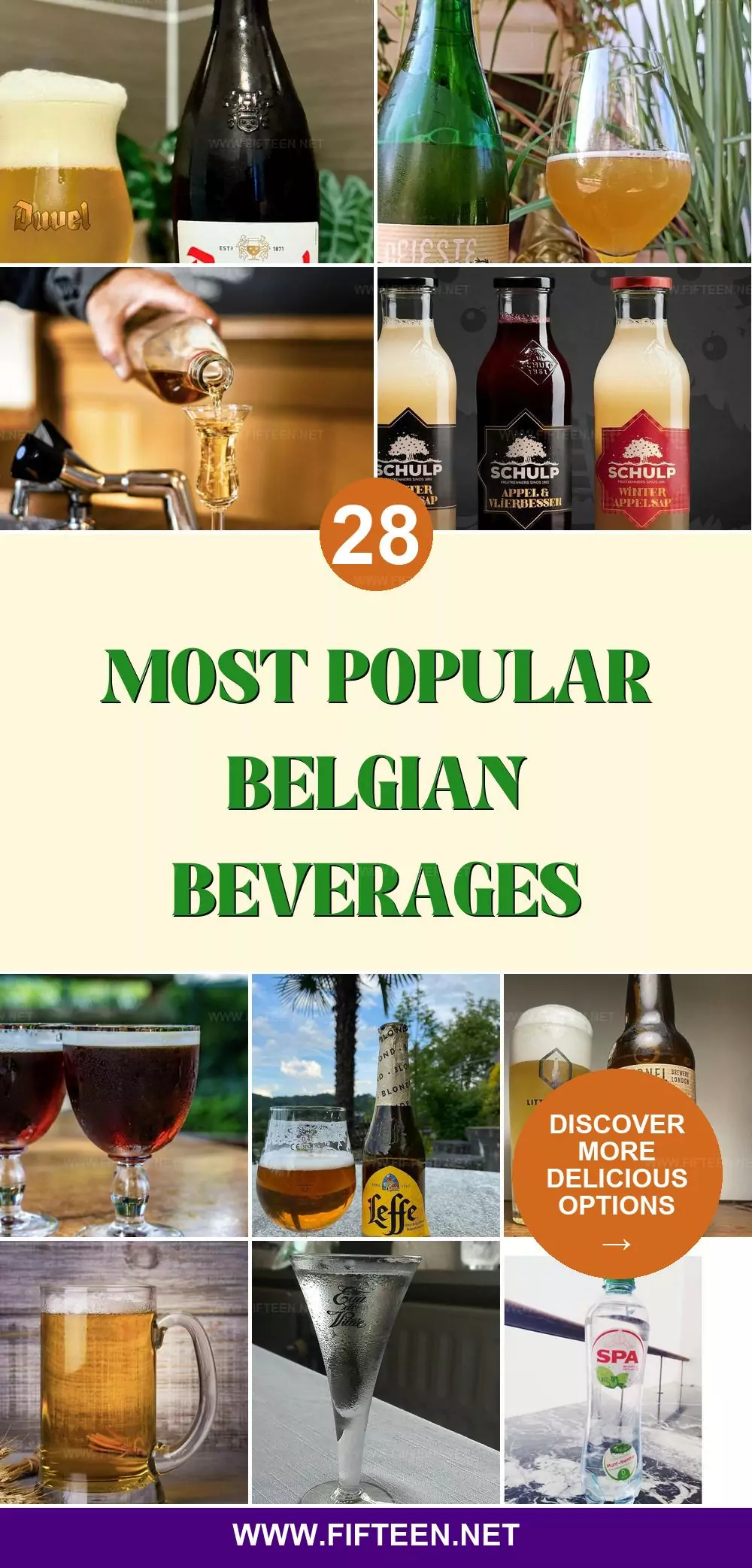
Jamie Scott
Editor in Chief, Senior Content Writer
Expertise
Home Cooking, Meal Planning, Recipe Development, Baking and Pastry, Food Editor, Cooking-video Maker, Western Food Evaluation Expert
Education
Le Cordon Bleu College of Culinary Arts
Local Community College, New York, NY
Jamie Scott is a skilled culinary expert and content creator specializing in Western cuisine. With over 15 years in the culinary field and formal training from Le Cordon Bleu, Paris, Jamie deeply understands how to blend nutrition with delicious flavors. His passion for cooking matches his commitment to making healthy eating accessible and enjoyable.
On Fifteen.net, Jamie brings a fresh perspective to classic dishes and beverages, offering readers insightful recipes, cooking tips, and a fresh view on meal planning that emphasizes taste, health, and simplicity.